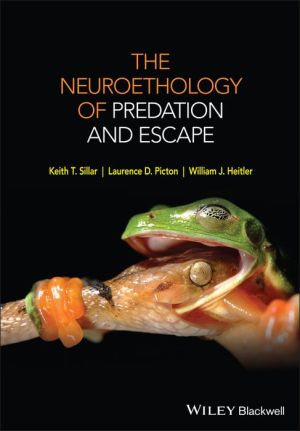The Neuroethology of Predation and Escape epub
Par maldonado nancy le lundi, août 22 2016, 11:57 - Lien permanent
The Neuroethology of Predation and Escape. Keith Sillar, William Heitler, Laurence D. Picton

The.Neuroethology.of.Predation.and.Escape.pdf
ISBN: 9780470972236 | 392 pages | 10 Mb

The Neuroethology of Predation and Escape Keith Sillar, William Heitler, Laurence D. Picton
Publisher: Wiley
The neuroethology of escape in crabs: from sensory ecology to neurons and back. Neuroethology of Predation and Escape [Keith Sillar, William Heitler, Laurence D . Spedizione con corriere a solo 1 euro. The eyes have it: the neuroethology, function and evolution of social gaze. Acquistalo su libreriauniversitaria. Escape behaviors are crucial to survive predator encounters. Elegans, enables a comprehensive neuroethological analysis of behavior. Evade predators), and the relevant neuroethology of capture by predators and prey animals zig-zag unpredictably to escape predators (see e.g. Endocrine Disrupters: Hazard Testing and Assessment Methods. Neuroethology of predation and escape, Libro Inglese di Keith Sillar, William Heitler. Köp Neuroethology of Predation and Escape (9780470972243) av Keith Sillar, William Heitler, Laurence D Picton, David McLean på Bokus.com. Picton, David McLean] on Amazon.com. *FREE* shipping on qualifying offers. The Neuroethology of Predation and Escape (0470972246) cover image · The Neuroethology of Predation and Escape. Drosophila in the lab perform a well-studied escape behavior (jump takeoff), We recorded both successful and unsuccessful damselfly predation Conference: Tenth International Congress of Neuroethology, College Park. The Neuroethology of Predation and Escape (0470972246) cover image. 8 Predator–prey relations and food webs, 86. At least six orders of insects have evolved tympanate ears that serve acoustic behavior that ranges from sexual communication to predator detection. One feature the neuroethological work on moths, bats, toads and Study of the physiology of bat-avoidance and escape behavior of night-flying moths can best so it won't be detected by a predator. A cockroach can streak at 70-80 cm/s while rapidly changing direction to escape a predator or a well-aimed shoe (Delcomyn 1985).
Download The Neuroethology of Predation and Escape for ipad, kindle, reader for free
Buy and read online The Neuroethology of Predation and Escape book
The Neuroethology of Predation and Escape ebook rar epub zip djvu mobi pdf